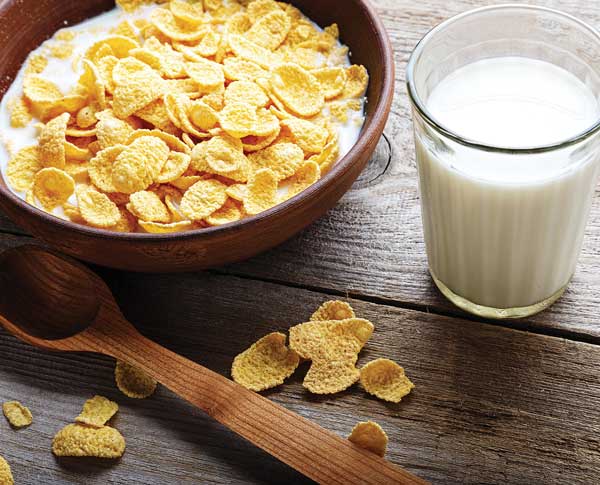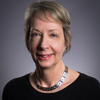How Saliva Influences Food Preferences; Study Questions Safety of Low-Carb Diets
NEWS

Antioxidant properties of vitamin C–rich juices
Studies have shown that bioactive compounds can play an important role in reducing oxidative stress and protect against various diseases. Sources in the human diet include fruit and good quality fruit juices, which may contain polyphenols but also other phytochemicals such as vitamin C.
A study in the Journal of Food Science analyzed the antioxidant properties of vitamin C–rich juices that had undergone mild processing. These included acerola, goji berry, sea buckthorn, wild rose, cranberry, and Japanese quince juices. The content of total polyphenols, total flavonoids, total anthocyanins, and vitamin C, as well as the antioxidant capacity, was evaluated; phenolic acids and selected flavonoids were also determined.
Results of the study indicated that acerola and wild rose juices contained the highest amounts of vitamin C and total polyphenols, and had the highest antioxidant capacity. Acerola owes its high antioxidant properties mainly to vitamin C, whereas the antioxidant capacity of wild rose is also attributed to its rich content of flavonoids and phenolic acids. Sea buckthorn juice and Japanese quince juice had lower antioxidant capacity yet higher than determined for gojiberry and cranberry juices. Total anthocyanins were the highest in cranberry juice.
The results showed that the analyzed juices were a valuable source of natural antioxidants. Generally, vitamin C–rich juices are also a good source of polyphenols. These compounds act synergistically and define the antioxidant properties of juices.
How saliva influences food preferences
Saliva is crucial for tasting and digesting food, but it may play a subtler role as well. A study presented at the 256th National Meeting & Exposition of the American Chemical Society suggests that the proteins in saliva could be part of a feedback loop that influences how food tastes to people—and, by extension, what foods they’re willing to eat.
Saliva contains thousands of proteins released by salivary glands, some of which are thought to bind to flavor compounds in food and to taste receptor cells in the mouth. Certain proteins may be responsible for the astringent sensations that develop when eating chocolate, red wine, and other foods. “If we can change the expression of these proteins, maybe we can make the ‘bad’ flavors like bitterness and astringency weaker,” said Cordelia Running, principal investigator of the study based at Purdue University.
In Running’s study, participants were asked to drink chocolate almond milk three times a day for a week and rate its bitterness and astringency. The researchers found that the protein composition of the participants’ saliva changed during that week. Several proline-rich proteins, which can bind the bitter/astringent compounds in chocolate, increased. As these proteins shifted up, the sensory ratings for bitterness and astringency shifted down.
The findings support the idea that “saliva modifies flavor, which in turn modifies dietary choices,” said Running. “Those choices then influence exposure to flavors, which over time may stimulate altered expression of saliva proteins, and the circle begins anew. Maybe this knowledge will help someone stick to a healthier diet long enough to adapt to like it.”
Snacking drives food container demand
Fresh food container demand in the United States is projected to increase 3.7% per year to $1.1 billion in 2022, according to a new study from The Freedonia Group. Gains will be driven mainly by trends in snacking and healthy eating, as premade meals and snacks in food retail outlets allow consumers to eat fresh food quickly and easily.
Dairy product containers will account for the largest share of sales growth through 2022. The continued popularity of single-serving dairy containers and increasing popularity of specific yogurt segments will support gains. Plastic bottles will see especially strong growth due to the increasing consumption of various nondairy creamers, as consumers look to create coffee shop flavors at home.
The perishable prepared foods market will see the fastest fresh food container gains through 2022. Consumers’ desire for convenience will boost demand, as rigid tubs, clamshells, and bowls are ideal containers for cut and peeled fruit, prepared sandwiches, and premixed salads.
Study questions safety of low-carb diets
Low-carbohydrate diets are unsafe and should be avoided, according to a large study presented at the European Society of Cardiology Congress 2018.The study prospectively examined the relationship between low-carbohydrate diets, all-cause death, and deaths from coronary heart disease, cerebrovascular disease (including stroke), and cancer in a nationally representative sample of 24,825 participants of the U.S. National Health and Nutrition Examination Survey from 1999 to 2010.
Compared with participants who consumed the most carbohydrates, those with the lowest intake had a 32% higher risk of all-cause death over an average 6.4-year follow-up. In addition, risks of death from coronary heart disease, cerebrovascular disease, and cancer were increased by 51%, 50%, and 35%, respectively.
The results were confirmed in a meta-analysis of seven prospective cohort studies with 447,506 participants and an average follow-up of 15.6 years, which found increased risks in total, cardiovascular, and cancer mortality of 15%, 13%, and 8%, respectively, when comparing low-carbohydrate diets to high-carbohydrate diets.
“Low-carbohydrate diets might be useful in the short term to lose weight, lower blood pressure, and improve blood glucose control, but our study suggests that in the long term they are linked with an increased risk of death from any cause, and deaths due to cardiovascular disease, cerebrovascular disease, and cancer,” said study author Maciej Banach.
 Milk at breakfast lowers blood glucose
Milk at breakfast lowers blood glucose
A change in breakfast routine may provide benefits for the management of type 2 diabetes, according to a new study published in the Journal of Dairy Science.
H. Douglas Goff and the team of scientists from the Human Nutraceutical Research Unit at the University of Guelph, in collaboration with the University of Toronto, examined the effects of consuming high-protein milk at breakfast on blood glucose levels and satiety after breakfast and after a second meal.
Milk consumed with breakfast cereal reduced postprandial blood glucose concentration compared with water, and a high concentration of dairy proteins reduced postprandial blood glucose concentration compared with normal dairy protein concentration. The high-protein treatment also reduced appetite after the second meal compared with the low-protein equivalent.
Digestion of the whey and casein proteins naturally present in milk releases gastric hormones that slow digestion, increasing feelings of fullness. Digestion of whey proteins achieves this effect more quickly, whereas casein proteins provide a longer-lasting effect.
Although the team found only a modest difference in food consumption at the lunch meal when increasing whey protein at breakfast, they did find that milk consumed with a high-carbohydrate breakfast reduced blood glucose even after lunch, and high-protein milk had a greater effect. Milk with an increased proportion of whey protein had a modest effect on pre-lunch blood glucose, achieving a greater decrease than that provided by regular milk.
According to Goff and colleagues, “This study confirms the importance of milk at breakfast time to aid in the slower digestion of carbohydrate and to help maintain lower blood sugar levels. Nutritionists have always stressed the importance of a healthy breakfast, and this study should encourage consumers to include milk.”
News Bites
• Archer Daniels Midland opened a new regional office and state-of-the-art flavor and ingredient creation, application, development, and customer innovation center in Shanghai, China.
• Biocatalysts has made a £6 million investment in future manufacturing capacity, including an 11,000-square-foot extension to its existing building.
• Bunge has completed the sale of its international sugar trading operations to Wilmar.
• Cargill announced its intention to invest $150 million to construct an HM pectin production facility in South America. HM pectin is a citrus fruit–based texturizer used for jams, beverages/juices, acid dairy drinks, and confectionery.
• Coca-Cola has reached a definitive agreement to acquire Costa Limited, a UK-based coffee chain.
• Firmenich has acquired Campus, an innovator in the application of natural functional ingredients for protein applications, specializing in clean label, meat, dairy, sauces, and plant-based food.
• The Monell Center and Jefferson (Philadelphia University and Thomas Jefferson University) signed an Agreement of Cooperation outlining how the institutions will collaborate to develop joint scientific programs and clinical opportunities to advance their shared mission of improving human health.
• Nestlé completed the acquisition of a majority stake in Terrafertil, a natural foods company and global producer of goldenberries.
• Nestlé Waters North America has expanded its ReadyRefresh operations after entering into an agreement to acquire Dayspring Water’s customers in Trappe, Md.
• PepsiCo announced plans to purchase carbonated water machine maker SodaStream for $3.2 billion.
• Stir Foods and Pacifica Foods have acquired Sabra Dipping’s salsa business based in Oceanside, Calif.
• Tyson Foods has reached a definitive agreement to buy the Keystone Foods business from Marfrig Global Foods for $2.16 billion.
• WholeStone Farms and Hormel Foods have entered into a definitive agreement to sell the Hormel Foods Fremont, Neb., processing facility to WholeStone Farms. The sale of the facility will be final in December.
• The World Food Prize Foundation announced that Matthew Rouse, a researcher with the U.S. Department of Agriculture Agricultural Research Service, is the winner of the 2018 Norman Borlaug Award for Field Research and Application.
 Margaret Malochleb,
Margaret Malochleb,
Associate Editor
[email protected]
